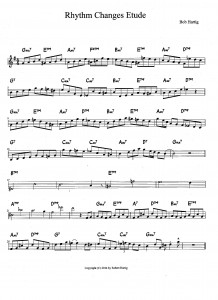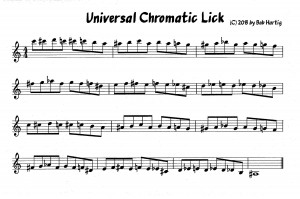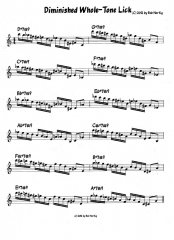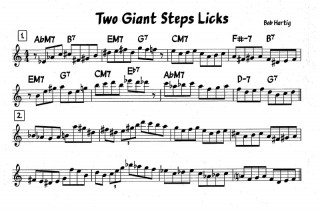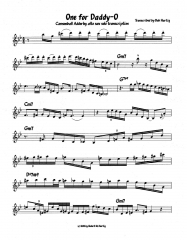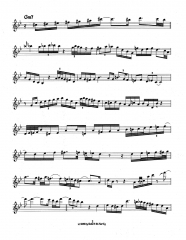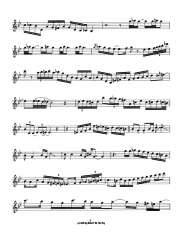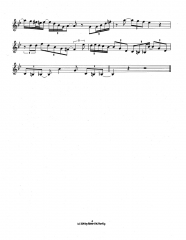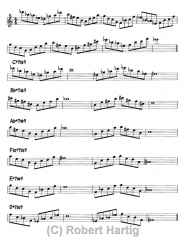Greetings, friends! My postings in Stormhorn are admittedly sporadic these days, but this blog is still very much alive. Storm chasing this year has been nonexistent for me, but that’s no surprise; it has been a lousy storm season for chasers across the board, even for those who live in Tornado Alley. But the musical side of things is going strong, and I’ve got a few practical ideas to share about pentatonic scales, altered scales, and their relationship. I just need to make the time to transcribe them and put them in print.
Guitar instructor Marc-Andre Seguin, however, has got some perspectives that are ready at hand to share. Perspectives from instrumentalists other than saxophonists such as I are most welcome; we can all learn from each other, and beginning jazz instrumentalists of every stripe can profit from Marc. His bio follows at the end, so I’ll spare you a lengthier introduction and hand the microphone over to him.
Tips on Jazz Guitar for Beginners
By Marc-Andre Seguin
Starting out on jazz guitar isn’t easy. The intricacies of the jazz language can seem insurmountable without direction. Here are a few tips to get you started on the path of jazz guitar mastery.
Listen
Without even picking up the guitar, it’s important to constantly listen to jazz recordings. Simply by hearing this style, many concepts are internalized, such as rhythm, phrasing, harmony and improvisation. Great recordings are available from legendary guitarists such as Joe Pass, Wes Montgomery, Kenny Burrell, to name just a few, and they should be constantly playing in your ears.
But don’t stop at guitarists. It’s crucial to listen to other instruments as well. John Coltrane, Charlie Parker, Miles Davis, Bill Evans, Thelonious Monk, and others have made immense contributions to the style. So vary your listening habits to include these and other major contributors to the language.
Practice
Playing jazz involves muscle memory and good reflexes, and these are cultivated in the shed. Although the genre is often intellectual, most improvisations rely on unconscious movements to make the connection with our inner ear. It’s important to have a solid foundation on which to build our musical messages. Following are some simple approaches to practicing chords and scales.
Chords
There’s a simple approach to mastering the many voicings for guitar: start small and build up your chordal database little by little. Root forms of chords are the building blocks to more complex and extended variations. These forms can be learned starting from the sixth and fifth strings and, once memorized, can be practiced by reading out the chords of a standard.
There are four main chord types to learn: the major 7, dominant 7, minor 7, and minor 7b5. With these barebones varieties, you’ll be able to play most of the jazz repertoire.
Scales
Once you’ve memorized chords, you’re ready to apply the correct scales over them. Scales require a relatively large investment of time to learn, since there are multiple positions of the same scale all along the neck. The easiest approach is to methodically learn each scale and keep it in your fingers for an extended period until it becomes second nature.
Learn
To progress quickly, constantly learn new material. The more you explore the genre, the more fluent you will become in its language. Here are aspects in which you should invest your time.
Standards
Work at memorizing the hundreds of tunes that make up the standard repertoire of jazz musicians. Most are older, popular tunes from the “American songbook” that jazz instrumentalists have adapted to fuel improvisations. Learning them is not as daunting as it sounds; many are contrafacts: new melodies played over the chord changes of a popular song. “I Got Rhythm” is a classic example: many jazz standards use “rhythm changes” (as jazz musicians call them) for their harmony. Others are based on the blues grid, and that’s where I suggest you start. The simple heads (melodies) and chords of tunes like “C Jam Blues” and “Blue Monk” are perfect for beginning improvisers. And blues in minor keys provide a good introduction to other types of chords. A few other well-known standards that most beginners explore first are “Autumn Leaves,” “All the Things You Are,” “Blue Bossa,” and “Summertime”—and the list goes on. Learn the melody and the chord changes, then start improvising over the chords.
Licks
A classic way to absorb jazz vocabulary is to learn different licks from your favorite players. The classic, extremely profitable approach is to listen to their recordings, pick a lick you like, and then work at playing it yourself till you’ve got it right. A simpler way is to search the internet and your local bookstore for books of licks and patterns. Choose a lick, learn it in different keys, and start playing it over the standards you’re learning—and, eventually, in different positions on the guitar. The more such phrases you assimilate and begin to mix and match, the deeper will become your understanding of jazz mechanics.
Solos
Learn entire solos. If you are up to it, you can transcribe your own. Doing so is a complete jazz workout that will greatly enhance your abilities. The more you transcribe, the better you will get at it.
If you’re not up to transcribing, the internet is full of written solo transcriptions. Take advantage of them. Memorizing whole solos will show you how the pros and legends develop a jazz improvisation and how they navigate chord changes. You don’t need to stick to guitar solos, but they’re a good place to start. Some saxophone, trumpet, and piano solos can be quite hard to adapt to the guitar; however, they’re extremely valuable learning tools.
Play
If you have like-minded friends nearby who love playing jazz, get with them. I spent countless hours jamming with fellow students during my musical studies, and it was probably the most enriching experience I’ve had. Teaming with another guitarist or a bassist is an easy way to start, and you can share ideas and concepts. Playing with horn players will make you work on comping and solo playing, and playing with a pianist will force you to explore a more minimalist direction and creative ways of complementing the music.
* * *
There are many concepts to internalize in jazz. Gather information about them from various sources. Take everything at a steady pace, work your way slowly but surely through what you learn, and you’ll be surprised sooner rather than later at how it all falls into place. Happy practicing!
About the Author
Marc-Andre Seguin is the webmaster, “brains behind,” and teacher at JazzGuitarLessons.net, the number one online resource for learning how to play jazz guitar. He draws from his professional experience both as a jazz guitarist and an instructor to help thousands of people from all around the world learn the craft of jazz guitar.
